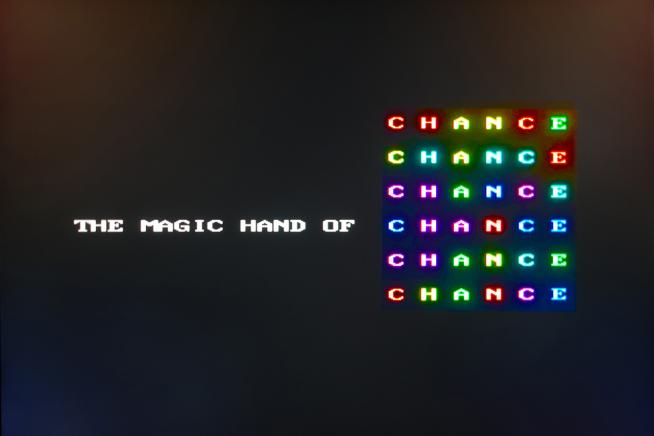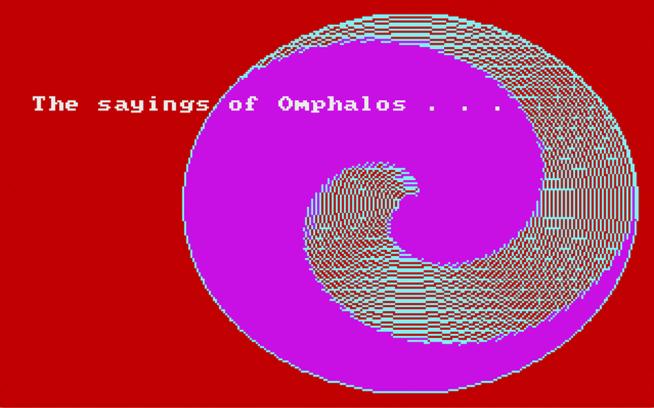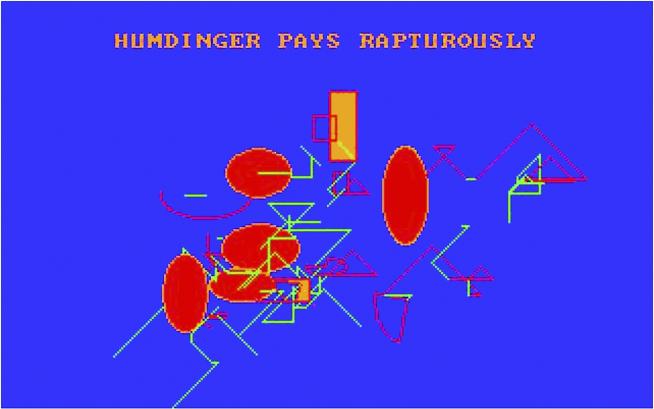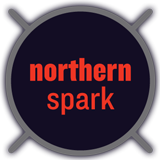
Title screen from The Magic Hand of Chance, 1982-84. Courtesy the artist.

Frame from routines in The Magic Hand of Chance, 1982-84. Courtesy the artist.

Frame from routines in The Magic Hand of Chance, 1982-84. Courtesy the artist.
The Magic Hand of Chance
The Magic Hand of Chance, a pioneering work by Roman Verostko, presents a nostalgic display of early “computer art” created in 1982.
Written in BASIC with a first generation IBM PC, the master program occupies only 32 kb of space (the size of a thumbnail digital photo). Limited to 200 pixels of horizontal resolution and only three colors per frame, The Magic Hand generates surprisingly colorful bits of charm and humor with endless, non-repeating visual improvisations and textual invention. The core program presents four improvisations, a sequence of “cyberflower” forms, and occasional “Sayings of Omphalos,” a playful form of pseudo wisdom. This historic program was included in the exhibition the Algorithmic Revolution at the Center for Art and Media Technologies in Karlsruhe, Germany (2004-05). Its first public showing took place in a Minneapolis computer parts storefront in 1983. A special centennial version was shown in the 1986 MCAD centennial faculty exhibition.
Verostko, an MCAD professor emeritus in Liberal Arts, holds SIGGRAPH’s 2009 Lifetime Achievement Award and Gladbeck’s 1993 Golden Plotter Award. A founding member of the Algorists, he is best known for his richly colored algorithmic pen and brush drawings. Although schooled as a painter, he experimented with other media and programmed a series of electronically synchronized audio-visual programs in the late 1960s. He studied FORTRAN at the Control Data Institute in 1970 and that same year was a Bush Fellow at MIT. His first fully algorist work, The Magic Hand of Chance, grew into his master drawing program, HODOS, generating art with both ink pens and brushes mounted on drawing machines.





